Light, separate grains with a soft bite. That’s the promise. If you’ve struggled with sticky or uneven rice, you’re in the right place. This guide shows you exactly how to cook basmati rice on stove with simple steps that work every time.
This helps beginners, busy cooks, and anyone who wants consistent results without guesswork. You’ll see the tools and time upfront, then follow clear methods you can trust. You only need a heavy pot with a tight lid, a fine strainer, and about 20 to 35 minutes depending on the rice.
This is a stovetop guide for both white and brown basmati. You’ll learn why soaking improves texture, how to set the right ratio, and two main methods to try: the absorption method, and the boil-and-drain method. Use what fits your kitchen and your taste for texture. By the end, you’ll know the small touches that make a big difference, and you’ll have a plan you can repeat.
Ready to cook basmati rice on the stove the easy way?
Prep first: rinse, soak, and measure for perfect basmati on the stove
The best rice starts before the pot even touches the burner. A little prep protects the grain so it cooks long and fluffy, not short and sticky.
Start with the right bag of basmati. You can use standard white basmati, aged white basmati, or brown basmati. Aged basmati tends to be drier, so it often needs a touch more water to cook evenly. Brown basmati holds its bran layer. It needs more water and time, but it pays off in a nutty chew.
Rinse your rice in cool water until it runs mostly clear. Swish with your fingers to release surface starch. Drain and repeat 3 to 5 times. This simple rinse keeps grains from clumping and prevents that gummy feel. It also removes dust from milling.
Soak the rice after rinsing. For white basmati, 20 to 30 minutes is ideal. For brown basmati, 45 to 60 minutes helps soften the bran for even cooking. Short on time? Even a 10 minute soak helps.
Measure ratios for the absorption method. Use these as your baseline:
- White basmati: 1 cup rice to 1.5 cups water.
- Brown basmati: 1 cup rice to 1.75 to 2 cups water.
- If the rice is very old or very dry, add 0.25 cup more water.
Season the water. Add 0.5 to 1 teaspoon salt per cup of raw rice. A teaspoon of oil or ghee helps reduce foaming and keep grains separate.
Gather the right tools. Use a heavy-bottom pot with a tight lid so steam stays where you need it. A fine strainer makes rinsing and draining easy. If the lid is a little loose, place a clean kitchen towel under it to trap steam, keeping the towel corners away from the flame.
These steps set you up for success if you want to rinse basmati rice, soak basmati for better texture, and lock in the best water to rice ratio basmati needs.
Choose your basmati: white, aged, or brown
White basmati cooks the fastest and gives long, separate grains with a soft chew. Aged white basmati is drier, more aromatic, and cooks up extra separate. It may need a splash more water for the same texture.
Brown basmati keeps its bran, so it tastes nuttier and has more chew. It also needs more water and time. If you want perfect consistency every week, pick a trusted brand and stick with it. Your pot and your burner will behave the same with the same rice.
Rinse and soak for airy, separate grains
Rinse in a bowl or under a faucet: swish, drain, repeat 3 to 5 times until the water runs mostly clear. You’re removing loose starch, not scrubbing the grain.
Soak in cool water with 1 to 2 inches of water above the rice. This hydrates the center of each grain so it cooks evenly, tip to tip. After soaking, drain very well. Good draining keeps your water ratio accurate, which prevents mush.
Water-to-rice ratio cheat sheet
Use the absorption method ratios below as your starting point. Then adjust based on your pot, stove, and rice age.
| Rice Type | Ratio (Rice:Water) | Notes |
|---|---|---|
| White basmati | 1 : 1.5 | Soak 20 to 30 minutes. Add 2 to 4 tablespoons more water if very dry. |
| Brown basmati | 1 : 1.75 to 2 | Soak 45 to 60 minutes. Aim for low, steady heat while simmering. |
If you cook on a gas stove that runs hot or you live in a very dry climate, you may need a slight bump in water. Always measure water after you drain the soak so the math stays true.
Gear that makes stovetop rice easier
A heavy pot prevents scorching, especially at the edges. A tight lid traps steam for even cooking. If your lid is loose, set a clean towel between the pot and lid to catch steam, and tuck the corners up so they’re away from the flame. A fine strainer helps with thorough rinsing and draining. A measuring cup and a fork are all the extras you need.
How to cook basmati rice on stove, step by step (absorption method)
The absorption method gives classic, fluffy basmati without fuss. Follow the order, keep the heat gentle, and let steam do the work. This method works for both white and brown basmati with small timing changes.
Measure, rinse, soak, and drain. Add water by ratio, then season and simmer. Once it hits a boil, you lower the heat and leave it alone. The final rest lets trapped steam finish the center of each grain.
Cook times vary. White basmati usually needs 12 to 15 minutes on low heat. Brown basmati usually needs 25 to 30 minutes on low heat. Listen for a gentle hiss, not sputtering. If you smell toasting, the heat is too high.
When the water is absorbed, take the pot off the heat and rest it for 10 minutes, lid on. Fluff with a fork, not a spoon, so you do not smash the grains. If the rice seems moist, let extra steam escape for a minute or two before serving.
Minor tweaks help if things look off. If grains are still hard after the rest, sprinkle 1 to 2 tablespoons of hot water, cover, and rest for 5 minutes. If the rice seems too wet, keep it covered off heat for 5 more minutes so it steams dry. These simple moves keep your batch on track and make it easy to repeat next time. With this, you know how to cook basmati rice on stove without stress.
Measure and prep the pot
Add the drained rice to your heavy pot. Pour in measured water based on your ratio. Add 0.5 to 1 teaspoon salt per cup of rice. Add 1 teaspoon oil or ghee if you like. Use a pot that fits the burner so the flame does not lick the sides and scorch the edges.
Bring to a boil, then simmer low with the lid on
Set the pot over medium-high heat to reach a gentle boil. Stir once to loosen any grains stuck to the bottom. Drop the heat to low, cover with the lid, and let it simmer. Do not lift the lid during the simmer. Steam is doing the real work here.
Rest and fluff for light, separate grains
Turn off the heat, keep the lid on, and rest for 10 minutes. This rest evens out moisture from top to bottom. Fluff gently with a fork to separate the grains. If the rice feels a bit damp, let it rest uncovered for 1 to 2 minutes so extra steam escapes.
Timing tweaks for white vs brown and for altitude
White basmati tends to finish in 12 to 15 minutes. Brown basmati takes 25 to 30 minutes, sometimes a bit more, so be patient and keep the heat low.
At high altitude, water boils at a lower temperature. Add 2 to 3 tablespoons more water per cup and extend the simmer by 2 to 5 minutes. The same method still works, it just needs a little more water and time.
Other stovetop methods and simple flavors that level up your basmati
If you like very separate grains, try the boil-and-drain method. It cooks rice like pasta, then uses steam to dry the surface. If you like flavor built in, make a quick basmati rice pilaf. Both options keep the grains long and fluffy, without changing the basics.
You can also add flavor by swapping in broth, blooming saffron, or tossing in whole spices. Soaking helps long grains in any method, but you can shorten or skip it for boil-and-drain.
Boil and drain for extra separate grains
Use 6 to 8 cups of water per cup of rice. Salt the water well, the way you would for pasta. Add rinsed, well-drained rice to boiling water. Cook until the grains are just tender with a slight bite. Drain in a fine strainer, then put the rice back into the empty hot pot. Cover and steam for 5 to 10 minutes to dry the surface and finish the center. This is the easiest way to boil and drain basmati rice.
Make a simple basmati rice pilaf
Warm 1 to 2 tablespoons oil or ghee over medium heat. Sauté a small amount of onion or garlic until soft. Add whole spices if you like such as cardamom pods, bay leaf, cinnamon stick. Stir in the rinsed, very well-drained rice and toast for 1 to 2 minutes to coat each grain. Pour in hot water by ratio, bring to a boil, cover, then simmer. Rest and fluff as usual. This gives a classic basmati rice pilaf with rich aroma.
Easy flavor boosters without extra work
- Replace some or all water with chicken or vegetable broth.
- Add 1 to 2 teaspoons lemon juice to the water for brightness.
- Stir in a small knob of butter or ghee at the end.
- Sprinkle chopped cilantro or parsley before serving.
- For saffron, bloom a pinch in 2 tablespoons hot water for 5 minutes, then add with the cooking water.
When to soak, rinse, or skip for each method
- Absorption method: rinse and soak for the best texture and even cooking.
- Pilaf: rinse, then drain very well so the oil can coat the grains.
- Boil-and-drain: rinse to remove starch. A quick soak is optional. If you soak, drain well so timing stays predictable.
Troubleshooting, storage, reheating, and serving ideas
Basmati is forgiving once you know a few fixes. Whether your rice turns sticky, mushy, or undercooked, there is a quick save. You will also see how to reheat basmati rice so it stays soft, not dry. Then plan how much rice to cook per person and what to serve with it.
If your batch did not come out perfect, do not toss it. You can dry it out, steam it back, or turn it into something new like fried rice or lemon rice. Small tweaks give you a win with the same pot and burner next time.
Quick fixes: sticky, mushy, or hard rice
- Sticky or wet: spread rice on a tray and let steam off for 5 minutes, or return to low heat uncovered for 2 to 3 minutes.
- Mushy: turn it into fried rice or lemon rice. Use a hot pan so it dries a bit while it fries.
- Hard centers: sprinkle 2 tablespoons hot water over the rice, cover, and rest 5 to 10 minutes. The steam will finish the center.
These moves help fix mushy basmati rice, dry out wet rice, and soften hard grains without starting over.
How to store and reheat basmati rice safely
Cool rice fast within 1 hour. Spread it in a shallow dish so it cools evenly. Store in shallow containers for better chill.
Keep rice in the fridge for up to 4 days. Freeze for up to 3 months in airtight bags or containers.
To reheat basmati rice, add a splash of water, cover, and warm on low on the stove or in the microwave until steaming hot. Stir once halfway so the heat spreads through the center.
Serving sizes and easy pairings
Plan 1/3 to 1/2 cup dry rice per person, which yields about 1 to 1.5 cups cooked rice. For big eaters or leftovers, plan on the higher end.
Pair basmati with curries, grilled chicken, dal, stir-fries, kebabs, or roasted vegetables. Stir in peas or corn at the end for color and sweetness. A sprinkle of toasted nuts adds crunch.
Conclusion
Great basmati is simple. Rinse to remove starch, soak to hydrate, measure with a clear ratio, simmer low, rest for 10 minutes, then fluff. Start with the absorption method, or try boil-and-drain if you want extra separate grains. Next time, add whole spices or broth for more flavor. Keep a copy of the ratio cheat sheet, and practice with the same pot and burner. You will master how to cook basmati rice on stove with results you can count on. If this helped, save it, share it, and tell me what you will serve with your next pot of fluffy rice.
Related post:
Is Brown Rice Good to Lose Weight
The Reality of Your Calories in Food
Easy Delicious Vegetarian Dishes
How to Cook Basmati Rice on Stove: FAQs
What’s the best water-to-rice ratio for basmati on the stove?
Use 1 1/2 cups water for every 1 cup of rinsed basmati. For very old or very dry rice, go up to 1 3/4 cups. Measure accurately for consistent results.
Should I rinse or soak basmati rice?
Rinse until the water runs mostly clear, about 3 to 4 rinses. Soak for 15 to 20 minutes for longer, fluffier grains. If you skip soaking, add a few extra tablespoons of water.
How do I cook it step by step?
Bring water to a boil, add rinsed rice and salt, stir once. Lower to a gentle simmer, cover tightly, and cook for 12 to 15 minutes. Remove from heat, keep covered, and rest 10 minutes. Fluff with a fork.
Do I cook with the lid on or off?
Keep the lid on once it starts simmering. Steam finishes the cooking. Lifting the lid releases steam and can lead to uneven texture.
What kind of pot works best?
A medium heavy pot with a tight lid, like stainless steel or a Dutch oven. Thin pots run hot and cause scorching. Nonstick can help prevent sticking.
Why is my rice sticky or clumpy?
Common causes include not rinsing, too much water, or stirring while cooking. Rinse well, use the right ratio, and avoid stirring after the first quick stir.
How do I avoid mushy rice?
Measure water precisely, keep a gentle simmer, and do not cook past 15 minutes. Rest covered for 10 minutes so moisture redistributes instead of breaking grains.
What if the rice is undercooked or crunchy?
Sprinkle 2 to 3 tablespoons of hot water over the rice, cover, and cook on low for 3 to 5 more minutes. Rest again before fluffing.
How much salt or oil should I use?
Add 1/4 to 1/2 teaspoon salt per cup of dry rice. Optional: 1 teaspoon oil or ghee per cup for aroma and to reduce foam.
Can I add aromatics or spices?
Yes. Add a bay leaf, a few cardamom pods, a small cinnamon stick, or a pinch of cumin to the water. Remove whole spices before serving.
How do I keep the pot from boiling over?
Use a larger pot than you think you need, keep the simmer gentle, and add a small splash of oil. Skim foam early if needed.
Is soaking required for aged basmati?
It helps. Aged basmati benefits from a 15 to 20 minute soak, which yields longer grains and even cooking. Adjust water to 1 1/2 to 1 3/4 cups per cup of rice.
What’s different about brown basmati?
Use 2 cups water per cup of rice. Simmer covered for 25 to 30 minutes, rest 10 minutes. Brown basmati is chewier and nuttier.
Gas vs electric stove, does it matter?
Gas reacts faster, so lower the heat promptly once it boils. Electric holds heat longer, so slide the pot slightly off-center if the simmer is too strong.
How do I scale the recipe for a crowd?
Keep the same ratio and timing. Use a wider pot so the rice sits in an even layer, no more than about 2 inches deep for even cooking.
Can I cook basmati without soaking if I’m in a hurry?
Yes. Rinse well, then use 1 3/4 cups water per cup of rice, simmer 12 to 15 minutes, rest 10 minutes.
How long does cooked basmati last, and how do I store it?
Cool quickly, then refrigerate in a shallow container for up to 4 days. Freeze for up to 1 month. Reheat with a sprinkle of water, covered, in the microwave or on the stove.
How do I reheat without drying it out?
Add 1 tablespoon water per cup of rice, cover, and microwave 60 to 90 seconds, stirring once. On the stove, warm on low with a splash of water, covered.
Does rinsing wash away nutrients?
It removes surface starch and a trace of water-soluble vitamins. For white basmati, the benefit of better texture outweighs the minor loss for most home cooks.
Can I toast the rice before boiling?
Yes. Sauté rinsed, drained rice in 1 tablespoon oil or ghee for 1 to 2 minutes until fragrant, then add water and cook as usual. This adds flavor and helps separate grains.
What if my water is hard or soft?
Hard water can make rice firmer. Add a splash of distilled water or a tiny pinch of baking soda, about 1/16 teaspoon per cup of rice. Soft water can make it softer, so reduce water slightly.
Why rest the rice after cooking?
Resting covered for 10 minutes lets steam redistribute, which firms the grains and prevents a wet surface.
Can I cook basmati like pasta in excess water?
You can, but you’ll lose some aroma and starch control. Boil in plenty of water until just tender, drain well, then cover and steam off heat for 5 minutes.
How do I handle foamy water?
Rinse well, use a drop of oil, and reduce the heat once it returns to a simmer. Skim early foam with a spoon if needed.
Any quick add-ins for a simple pilaf?
Stir in sautéed onions, peas, toasted nuts, or chopped herbs after fluffing. Season with lemon juice and a pat of butter or ghee.


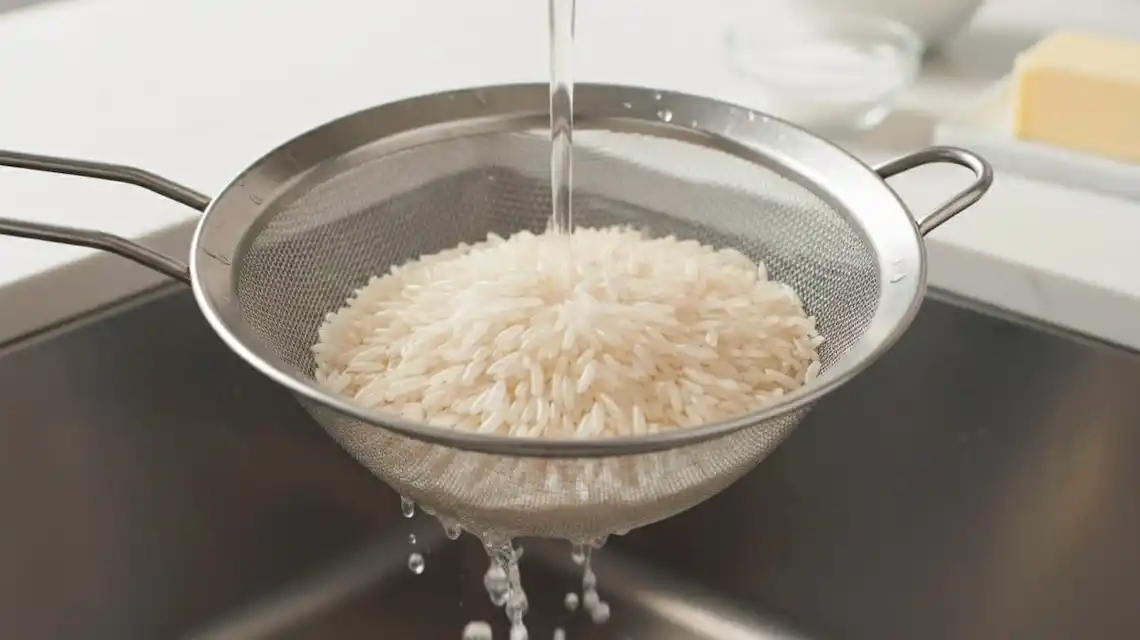

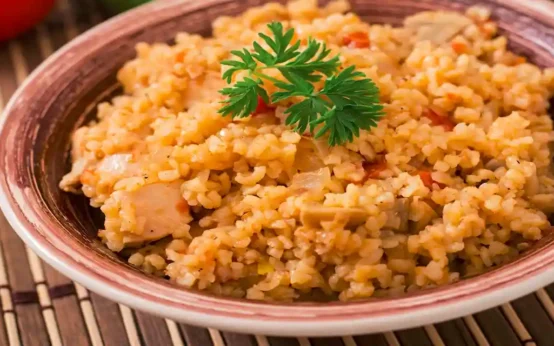 How to Cook Bulgur
How to Cook Bulgur 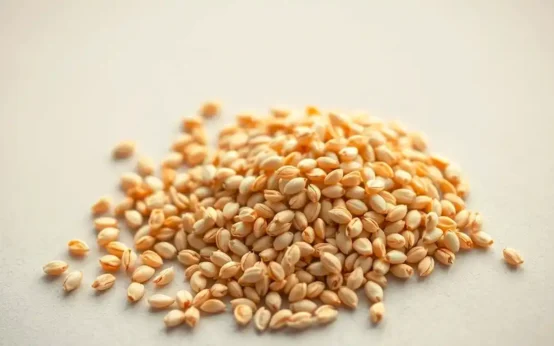 Health Benefit of Sesame Seed
Health Benefit of Sesame Seed 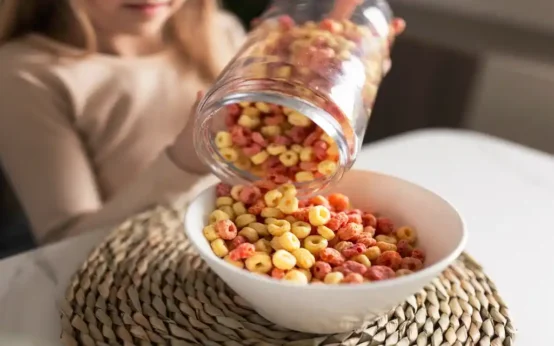 Healthiest Breakfast Cereal for Children
Healthiest Breakfast Cereal for Children 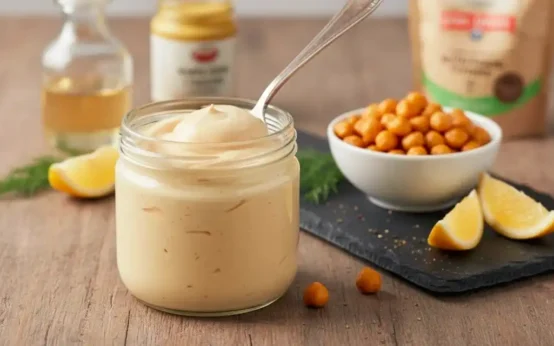 Vegan Oil Free Mayonnaise Recipe
Vegan Oil Free Mayonnaise Recipe 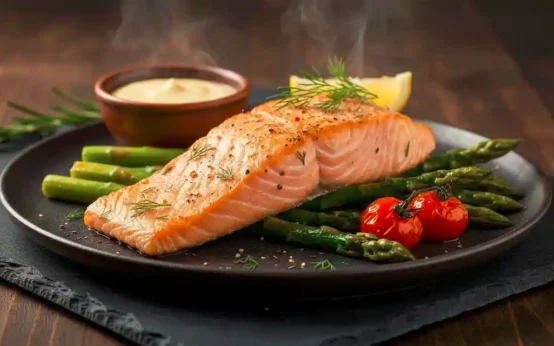 How to Cook The Salmon Fish
How to Cook The Salmon Fish  Nutrition to Enhance Athletic Performance
Nutrition to Enhance Athletic Performance